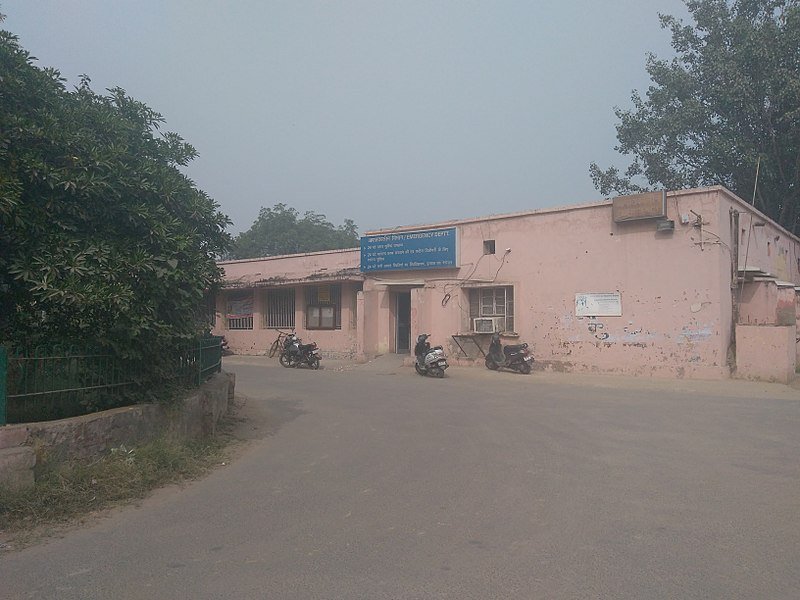
The Aam Aadmi Party (AAP) came to power in the national capital in 2015 on the back of a manifesto which included a pledge to establish 900 primary health centres (PHCs) in Delhi. It was subsequently announced that 1,000 PHCs would be built under the umbrella of the state government’s Aam Aadmi Mohalla Clinics (AAMC) scheme. Chief Minister Arvind Kejiriwal announced that 500 clinics planned before the end of 2015 and an additional 500 in advance of the following financial year.
An impasse over decision-making powers and difficulties obtaining land have frustrated progress. As of March this year, just 191 Mohalla Clinics have been built – and with Delhi going to the polls to elect its new Legislative Assembly next year, fulfilling the goal of 1,000 Clinics by then seems a lofty target.
The impasse over decision-making powers was fought between the elected government in Delhi and the Lieutenant Governor. The latter originally exercised powers as the National Capital Territory’s administrative head, but a Supreme Court ruling in July 2018 asserted that the Lieutenant Governor “has no independent [decision-making] power and is bound by the aid and advice of Delhi’s council of ministers….the constitutional scheme merely requires [the] AAP to communicate every decision” to the Lieutenant Governor.
This recognition of the political authority of the Delhi government did not end the difficulties over implementing Mohalla Clinics. The government has struggled to obtain land for erecting Mohalla Clinics, with requests blocked by the Delhi Development Authority (DDA) as recently as July. Somnath Bharti, an AAP MLA who sits on the DDA, alleged that members of the BJP sitting on the DDA “opposed the land allotment in the meeting without any concrete basis.” At present, permission to use 614 sites for Mohalla Clinics has been granted – still falling short of the 1,000 target despite an anonymous Health Department official’s optimism that “by this year-end, the number of clinics will go up as the work is in full swing.” The state government has said that 210 land requests were rejected by the DDA last January.
“One issue of contention has been the brinkmanship between the Centre and the Delhi government over their respective health models. The Centre has repeatedly pushed for the Delhi government to implement its Pradhan Mantri Jan Arogya Yojana (PMJAY) – popularly known as Ayushman Bharat – in the capital. These are overtures that the Delhi government have often rejected, citing the superiority of Mohalla Clinics.”

The Delhi government still insists that Mohalla Clinics are benefiting citizens. According to the state health department, more than 55 lakh have benefited from the clinics with ninety people utilising the sites on a daily basis. A survey of 180 Delhiites who had used the clinics by The Wire found that eighty percent witnessed reductions in their medical expenses as well as other costs such as travel, as 89 percent could reach the clinics on foot.
Despite these successes, The Wire went on to note that in the 2019-20 fiscal year, the budget for Mohalla Clinics was reduced to Rs 375 crore compared to the previous year when the allocation stood at Rs 403 crore. This followed a decrease in footfall, with Health Issues India previously reporting that it had declined by fifty percent between the 2018-19 and 2019-20 fiscal years, from eighty lakh in the former to forty lakh in the latter.
One issue of contention has been the brinkmanship between the Centre and the Delhi government over their respective health models. The Centre has repeatedly pushed for the Delhi government to implement its Pradhan Mantri Jan Arogya Yojana (PMJAY) – popularly known as Ayushman Bharat – in the capital. These are overtures that the Delhi government has often rejected, citing the superiority of Mohalla Clinics.
State health minister Satyender Jain has stated that “Delhi has a population of over two crore and this scheme [PMJAY] can only benefit ten lakh; what is the point of implementing it here? We are not going to implement the scheme, and will rather provide treatment to every patient visiting hospitals. We will not pick and choose.” These contentions have unspooled in the shadow of the Legislative Assembly elections, with reports suggesting that the BJP may make health a crux of its campaign by highlighting national gains on health it claims to have made with Ayushman Bharat.
There have been indications, however, that the icy relations over the two health models may thaw. Following a meeting with Prime Minister Narendra Modi in June, Kejiriwal suggested the state government may be amenable to integrating Ayushman Bharat and the Mohalla Clinics. As noted by Health Issues India, the two schemes could indeed complement one another given the emphasis placed on primary healthcare by the AAMC compared to how Ayushman Bharat foregrounds secondary and tertiary healthcare.
As far as meeting in the middle goes, it remains to be seen whether this will be the case. But with Mohalla Clinics behind on their targets, and unlikely to meet them before Delhi goes to the polls next year, it is clear that the Delhi government has much to lose if its healthcare promises go unfulfilled – and much to gain if integrating Mohalla Clinics and Ayushman Bharat inches both the state government and the Centre closer towards the aim of universal health coverage.

